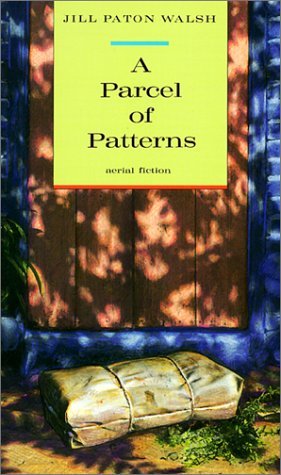
The Blurb (from Goodreads):
A parcel of patterns brought the plague to Eyam. A parcel sent up from London to George Vicars, a journeyman tailor, who was lodging with Mrs. Cooper in a cottage by the west end of the churchyard.
So begins Mall Percival's account of how her village of Eyam struggled against the plague. George Vicars dies on September 6, 1665, and by the end of October, twenty-five more townsfolk have been buried. As the deaths continue, the villagers, including Mall, begin to panic--helpless to fight off the disease. Uncertain as to how it is contracted and passed from one person to another, Mall forces herself to make a sacrifice that radically changes her life--she decides to stops seeing Thomas Torre, a man from another village, the man she hopes to marry. In June of 1666, at their minister's urging, the entire village makes a pact to protect those who live in the surrounding countryside by staying within the boundaries of Eyam.
Although Mall longs to see Thomas, she remains steadfast in her resolution, until one day Thomas runs into the center of Eyam, knowing that he will not be allowed to leave, yet fearing that Mall has died. Mall and Thomas marry, but their happiness is short-lived. Finally, in October of 1666, the pestilence subsides. Mall, overwhelmed by grief and sorrow, decides to write a chronicle of all she has witnessed in Eyam, hoping that it will set her free.
My Thoughts:
I spent a weekend in the Peaks District during my time in the UK this month. Given a choice between visiting Chatsworth House (the opulent seat of the Duke of Devonshire which was used as the site of Pemberley in the 2005 film adaption of Pride and Prejudice) and a small local village called Eyam (prounced ‘eem’), you might be surprised to know I chose the latter. Eyam, however, is the famous ‘plague village’ which isolated itself voluntarily in 1665 after the Black Death arrived in a flea-infested parcel of cloth. Only 83 villagers survived from a total population of 350. One of my all-time favourite books, ‘Year of Wonders’ by Geraldine Brooks, published in 2001, imagines what may have happened in that village in that year. ‘A Parcel of Patterns’ by Jill Paton Walsh, published in 1983, was one of the first fictional attempts to grapple with the subject. It is told from the point of view of a young woman named Mall, and shows how the coming of the plague destroyed lives and loves, and faith and fealty. It’s a delicate little book, and very sad.
You might also like to read my review of The Silvered Heart by Katherine Clements here:
https://kateforsyth.com.au/what-katie-read/vintage-book-review-the-silvered-heart-by-katherine-clements

